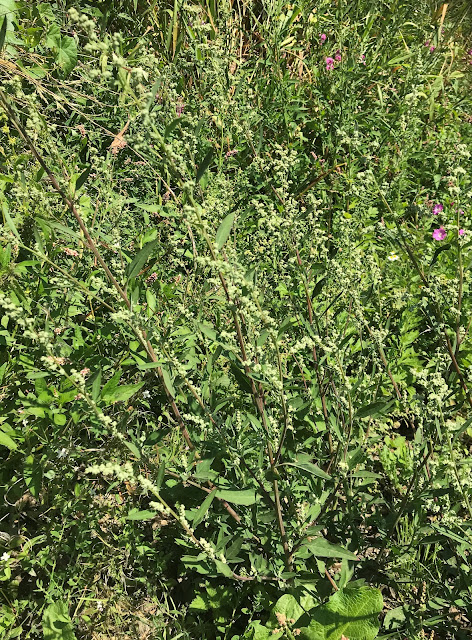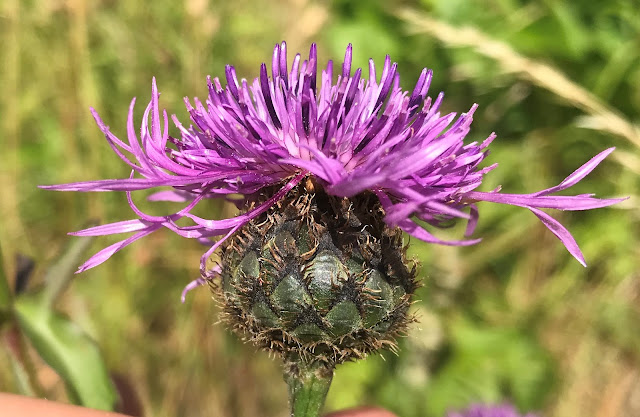Shortly after completion of construction of the A1(M) east of Leeds in 1999, the verges and road junctions in the vicinity of Aberford and Hook Moor (VC64) became briefly notable for unusual flora. Most especially, for the knapweeds that established from the seed mixtures used to 'restore' the affected landscape. Chief amongst these was Panicled Knapweed (Centaurea rhenana), a delicate airy species from mainland Europe. Its had a name change since then and now goes by Centaurea stoebe subsp. stoebe. It only really came onto my radar when Mike Wilcox re-found it in 2019, a remarkable 20 year persistence for a species still not listed in Stace or any other British Flora.
So finally, I made a conscious decision this weekend to pick an area of promising habitat near the motorway to see if I could find it. And I did. What was even better was that the location I chose to search is a new one. The plot has also recently thickened with Mike advising me that the true identity was likely to be a related subspecies that is widely known as an invasive species in Europe and North America. This is Spotted Knapweed (Centaurea stoebe subsp. micranthos), a species it runs down to nicely in a key I found online.



The verges of the A1(M) between Garforth and Aberford are also a dependable hunting ground for Brown Knapweed (Centaurea jacea), although it is vastly outnumbered by its hybrid with the native Slender Knapweed (Centaurea debeauxii subsp. nemoralis) i.e. Centaurea x monktonii. Based on the situation in West Yorkshire, this hybrid must be widely overlooked elsewhere within the core range of Slender Knapweed. One to look for in modified landscapes where knapweeds have been introduced in the past.
More unexpected after the above was a robust knapweed well off flowering but with well developed buds with feathery recurved phyllaries. This seems to be Centaurea oxylepis, which will have also derived from the original sowing some over 20 years ago.
The final good find was two new locations for an alien Greater Knapweed first found by Mike to the north of Aberford in 2021, which we came to the decision (based on limited online sources) was a good match for Centaurea scabiosa subsp. alpestris. This is a striking species with, when compared with the native subsp. scabiosa, very variably dissected yellow-green leaves, and larger capitula with a much more prominent (but variable, even on the same plant) black apex to the phyllaries.
.JPG)





.JPG)









.JPG)







